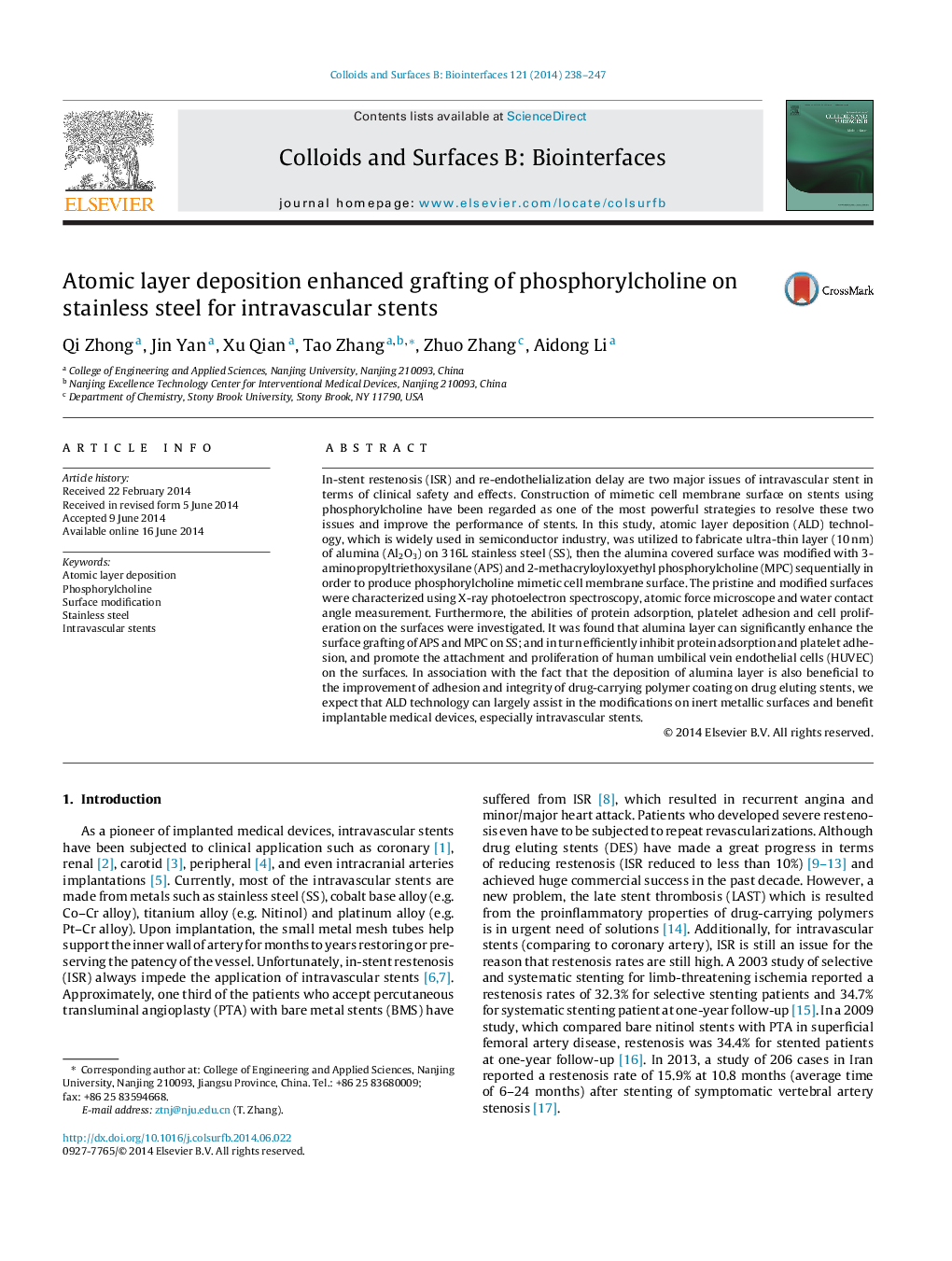| کد مقاله | کد نشریه | سال انتشار | مقاله انگلیسی | نسخه تمام متن |
|---|---|---|---|---|
| 599629 | 1454283 | 2014 | 10 صفحه PDF | دانلود رایگان |
• Atomic layer deposition (ALD) was introduced into bio-interface fabrication.
• Ultra-thin (10 nm) layer of Al2O3 was found to be beneficial to grafting of biomolecules.
• Mimetic cell membrane surface was simply fabricated by grafting of phosphorylcholine moiety mediated with Al2O3 layer.
• The modified surface is beneficial to blood compatibility and endothelial cells proliferation, thus conducive to intravascular stents.
In-stent restenosis (ISR) and re-endothelialization delay are two major issues of intravascular stent in terms of clinical safety and effects. Construction of mimetic cell membrane surface on stents using phosphorylcholine have been regarded as one of the most powerful strategies to resolve these two issues and improve the performance of stents. In this study, atomic layer deposition (ALD) technology, which is widely used in semiconductor industry, was utilized to fabricate ultra-thin layer (10 nm) of alumina (Al2O3) on 316L stainless steel (SS), then the alumina covered surface was modified with 3-aminopropyltriethoxysilane (APS) and 2-methacryloyloxyethyl phosphorylcholine (MPC) sequentially in order to produce phosphorylcholine mimetic cell membrane surface. The pristine and modified surfaces were characterized using X-ray photoelectron spectroscopy, atomic force microscope and water contact angle measurement. Furthermore, the abilities of protein adsorption, platelet adhesion and cell proliferation on the surfaces were investigated. It was found that alumina layer can significantly enhance the surface grafting of APS and MPC on SS; and in turn efficiently inhibit protein adsorption and platelet adhesion, and promote the attachment and proliferation of human umbilical vein endothelial cells (HUVEC) on the surfaces. In association with the fact that the deposition of alumina layer is also beneficial to the improvement of adhesion and integrity of drug-carrying polymer coating on drug eluting stents, we expect that ALD technology can largely assist in the modifications on inert metallic surfaces and benefit implantable medical devices, especially intravascular stents.
Figure optionsDownload as PowerPoint slide
Journal: Colloids and Surfaces B: Biointerfaces - Volume 121, 1 September 2014, Pages 238–247
